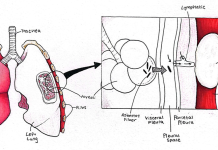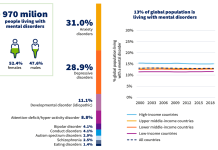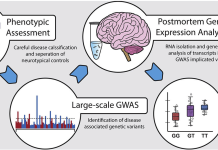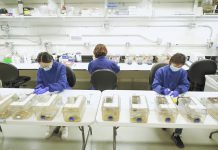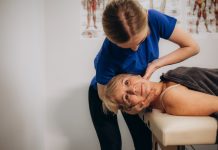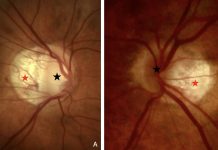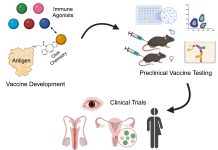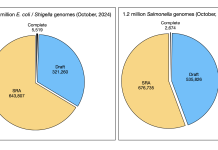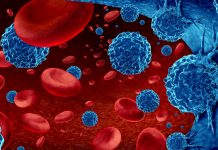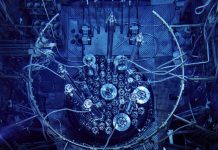Open Access Government produces compelling and informative news, publications, eBooks, and academic research articles for the public and private sector looking at health, diseases & conditions, workplace, research & innovation, digital transformation, government policy, environment, agriculture, energy, transport and more.
Home 2024
Archives
Understanding electromagnetic hypersensitivity (EHS)
Electromagnetic hypersensitivity: Michael Bevington, Chair of Trustees at Electrosensitivity UK, explains the health risks associated with exposure to radiofrequency radiation and electromagnetic fields and why more robust action is needed to protect public health.
Hormonal contraceptive designs and women’s mental health – Timing is of the essence!
Professor Belinda Pletzer from the Centre for Cognitive Neuroscience at Paris Lodron University of Salzburg explores the physical and psychological symptoms of a pill pause. She advocates for hormonal contraceptive designs that focus on women’s health needs instead of socio-cultural misconceptions about menstrual bleeding.
Targeting the most complex flipon of them all in the fight against cancers
In this article, Alan Herbert, the Founder, and President of InsideOutBio, guides us through targeting the most complex flipon of them all in the fight against cancers.
Asbestos, the pleural cavity, and autoimmune disease
Jean C. Pfau, Ph.D. from the Center for Asbestos-Related Disease and Kinta Serve from Idaho State University, provide their perspective on asbestos, the pleural cavity, and autoimmune disease.
Mental health and self-care: A comprehensive guide
This short guide explores the importance of self-care for good mental health and provides practical tips for implementing self-care strategies.
Data integration: A key to understanding the biological basis of mental disorders
ses two key advancements in genome-wide association studies (GWAS) and gene expression data to better understand the biological basis of mental disorders.
MMPC-live: Accessible resources for phenotyping of live mouse models of diabetes and obesity
Professor Carol F. Elias, from the University of Michigan’s Department of Molecular & Integrative Physiology, discusses key research opportunities enabled by the NIDDK Mouse Metabolic Phenotyping Center in live models – MMPC-Live.
Joint manipulation, a hands-on therapeutic technique
Rob Sillevis from the Marieb College of Health and Human Services explores joint manipulation, a hands-on therapeutic technique designed to relieve pain, improve mobility, restore joint function, and enhance patient functionality.
Early intervention for eating disorders
Tracey Wade, Matthew Flinders Distinguished Professor, provides an insightful examination of the significance of brief early interventions in the treatment of eating disorders.
Suicidal thoughts and actions: We need a new model
Konrad Michel, MD, Psychiatrist from the University of Bern, Switzerland, discusses the clinical approach to suicidal patients, providing a new look at a human phenomenon.
Spotting peripapillary intra-choroidal cavitation using OCT
Adèle Ehongo explores the potential of optical coherence tomography for diagnosing peripapillary intra-choroidal cavitation in myopic eyes.
Advancing vaccine development for chlamydia
Genital Chlamydia trachomatis infection is a significant public health burden; Professor of Pediatrics and Microbiology and Immunology, Toni Darville, discusses the potential efficacy of CPAF-adjuvanted vaccines in mitigating the spread and impact of the infection.
The future of personalised cardiovascular disease detection and monitoring
Professor Allan Lawrie from Imperial College London, discusses the future of personalised cardiovascular disease detection and monitoring, including comment on wearable technology and AI.
E. coli genomes, big data, and messy biology
Here, David Ussery from the Department of BioMedical Informatics, UAMS, details E. coli genome diversity, big data, and messy biology. New methods, we discover, allow for the comparison of millions of bacterial genomes in a few days and the confident assignment of taxonomic clusters.
A novel approach to cancer chemotherapy
Richard F. Ludueña, Professor Emeritus at the University of Texas Health San Antonio, discusses his innovative approach to cancer chemotherapy, which could significantly enhance its effectiveness.
Fuelling the global supply of medical radioisotopes for cancer care
European research reactors play a crucial role in producing medical radioisotopes using nuclear fuel and are transitioning to Low Enriched Uranium (LEU) to meet non-proliferation commitments and global demand. Jared Wight tells us how he and his colleagues are working to ensure a smooth conversion to LEU fuels.
Empowering voices: Breaking mental health stigma
John Hoey and Mary Cannon from Department of Psychiatry, RCSI University of Medicine and Health Sciences, Dublin, Ireland, share their research around breaking mental health stigma to empower voices.
A call to action: Supporting our nursing workforce through improved transition to practice
Dr. Kathryn Halverson, Assistant Professor in the Department of Nursing at Brock University, issues a call to action and a plea for help, urging us to listen to what new nurses are saying.
The future of AVS, dizziness, and vertigo in emergency departments Part IV: Priorities for...
In the fourth article of this five-part series, Dr Millie Nakatsuka discusses how reform must be integrated into the broader context of the public health landscape.
Fish hearts expose toxic truth about our cardiovascular health
Professor Holly Shiels, from the University of Manchester, is the Director of the Company of Biologists and the President of the Fisheries Society of the British Isles. She charts a toxic tide by tracing the path of pollutants from fish hearts to human cardiovascular health.




